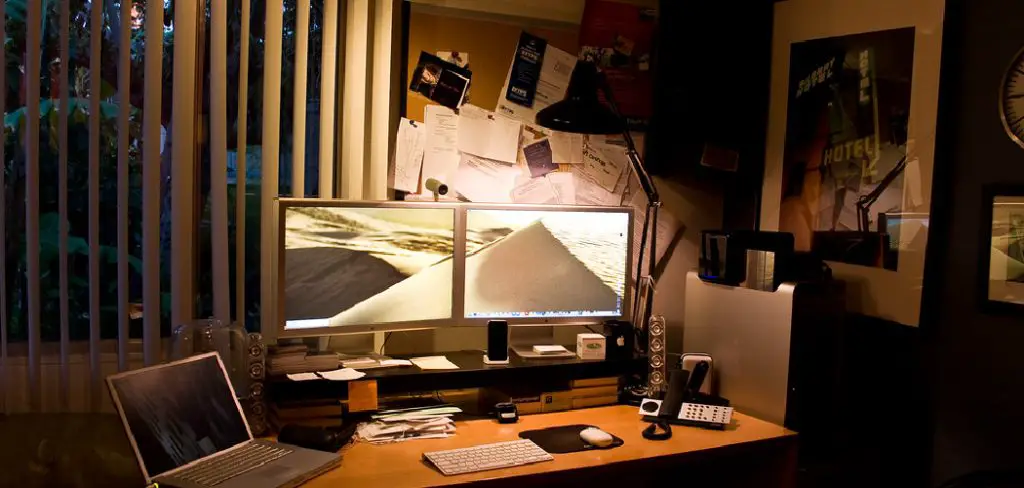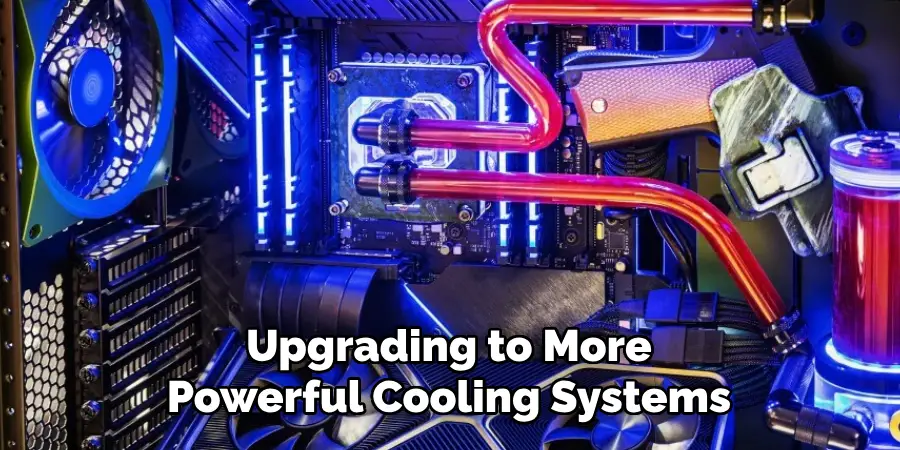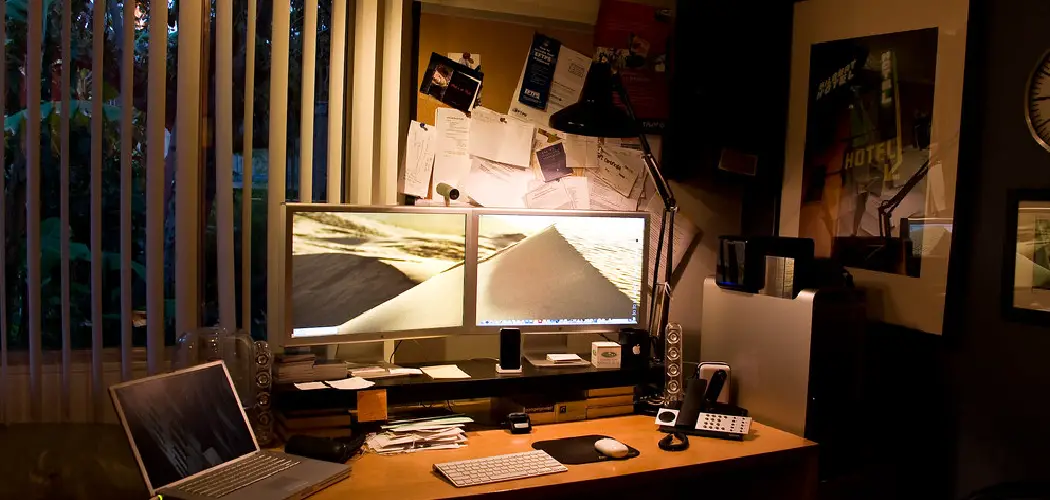Are you tired of coming home to a hot and stuffy room? Do you spend most of your time in front of your computer, only to feel uncomfortable due to the heat generated by your PC?
Cooling down a room with a PC can effectively manage indoor temperatures, especially during hot weather. Many computer components, such as graphics cards and processors, generate substantial heat during operation, creating an uncomfortable environment. By utilizing your PC’s cooling capabilities in combination with strategic placement and ventilation, you can help lower the overall temperature of your workspace or living area.

In this guide, we will explore various methods and tips on how to cool down room with PC to create a more comfortable climate at home.
What Will You Need?
Before we dive into the different ways to cool down a room with your PC, it’s essential to gather all the necessary materials and tools. Depending on the method you choose, you may need some or all of these items:
- Computer fans
- External cooling pads or stands
- Air conditioner or fan
- Thermal paste
- Additional case fans
Once you have all the materials ready, you can begin implementing these methods to cool down your room.
10 Easy Steps on How to Cool Down Room With PC
Step 1: Improve Airflow Around Your PC
The first step in cooling down your room is ensuring your PC has proper airflow. Start by repositioning your computer to allow for adequate ventilation. Make sure it’s at least a few inches away from walls or other objects that could block air intake and exhaust. Additionally, consider using a fan to circulate air around your setup, further enhancing cooling efficiency. This simple adjustment can significantly lower the temperature of both your PC and the surrounding area.

Step 2: Clean Your PC Components
Dust accumulation can hinder the cooling efficiency of your PC components. Over time, dust can obstruct fans and heat sinks, causing them to work harder and generate more heat. Regularly clean your PC by unplugging it and carefully opening the case to cool down your room. Compressed air or a soft brush removes dust from fans, vents, and other components. Be cautious when cleaning sensitive parts, and avoid damaging any wiring. Keeping your PC clean will ensure that it runs efficiently and contributes less to the overall heat in your room.
Step 3: Optimize Your PC Settings
Another effective way to reduce heat generation from your PC is to adjust its power settings and performance modes. You can access the power settings through your operating system’s control panel or settings menu. Setting your computer to a power-saving mode can help decrease energy consumption and heat output. Additionally, consider lowering the graphics settings in games or heavy applications, as high-performance settings can increase GPU activity and, consequently, more heat. Finding a balance between performance and power efficiency can help keep your room more relaxed while ensuring a satisfactory computing experience.
Step 4: Use External Cooling Solutions
In addition to optimizing your PC’s internal cooling, external cooling solutions can significantly enhance your room’s temperature. Consider investing in external cooling pads or stands that improve airflow around your laptop or desktop. These devices help dissipate heat more effectively and can provide additional fan power to remove heat. If you have a desktop PC, you might also think about adding dedicated case fans or upgrading to more powerful cooling systems, such as liquid cooling. Complementing your existing setup with these external solutions allows you to create a more comfortable environment while using your computer.

Step 5: Manage Ambient Temperature
Controlling the room’s ambient temperature can significantly impact how effectively your PC cools down the area. Start by closing windows and blinds during the hottest parts of the day to prevent external heat from entering. Use an air conditioner or fans with your PC to create a more balanced cooling effect. Placing a fan near your PC can help direct the hot air away from it, further aiding in maintaining a comfortable temperature. Consider using natural ventilation during cooler evenings by opening windows and allowing fresh air to flow in, which can lower the overall room temperature and give your PC a more conducive environment to operate without excessive heat build-up.
Step 6: Monitor Your PC’s Temperature
Keeping track of your PC’s temperature is crucial for maintaining an optimal environment. Use temperature monitoring software to monitor your CPU and GPU temperatures while your computer is in use. Many tools are available that can give you real-time readings and even alert you to any overheating issues. If you notice that your components are frequently reaching high temperatures, it may indicate that further cooling solutions are necessary. Regular monitoring empowers you to take proactive measures before overheating becomes a problem, ensuring a more comfortable room and prolonging the life of your hardware.
Step 7: Utilize Intelligent Power Management
Implementing intelligent power management can significantly help reduce heat production from your PC. Many modern operating systems offer built-in features that allow you to schedule power-saving modes during certain hours, especially when the PC is not in use. This means your computer can enter a low-power state, reducing heat output. Additionally, consider using software to monitor and manage CPU usage; limiting background processes can enhance energy efficiency. These proactive measures not only contribute to a more fantastic room but can also extend the longevity of your hardware by preventing unnecessary strain.

Step 8: Upgrade Your Hardware
If your PC consistently produces excessive heat, it may be time to consider hardware upgrades. Upgrading to more efficient components, such as a higher-quality power supply, a more effective CPU cooler, or a quieter graphics card, can reduce heat output. Look for hardware with better energy efficiency ratings and advanced cooling technologies. Additionally, keeping your system up-to-date with the latest drivers and firmware can enhance performance and, in turn, reduce unnecessary heat generation. By investing in better hardware, you ensure a more relaxed room and an improved computing experience overall.
Step 9: Regular Maintenance and Upkeep
Regular maintenance is essential to ensure your PC operates efficiently and produces minimal heat. Schedule routine checks of your computer’s components, including thermal paste on the CPU, which can dry out over time and inhibit effective heat transfer. Every few months, consider reseating components and checking for any signs of wear or damage. Additionally, ensure your operating system and software are continually updated, as these updates can sometimes optimize resource usage and reduce the load on your hardware. By committing to regular maintenance, you can help maintain a more fantastic environment and extend the lifespan of your PC components.
Step 10: Consider Minimalism in Usage
Adopting a minimalist approach to how you use your PC can also contribute to a more fantastic working environment. Evaluate the applications and processes you have running simultaneously; closing unnecessary programs can reduce your CPU’s strain and lower heat production. Furthermore, limit multitasking and focus on one task at a time, especially during intensive activities. Streamlining your workload improves efficiency and prevents your PC from overheating, ultimately leading to a more comfortable room temperature. By being intentional about your computer usage, you can significantly impact the overall heat output of your system.

By following these steps, you can effectively manage heat production from your PC and contribute to a cooler, more comfortable room temperature.
5 Things You Should Avoid
- Blocking Air Vents: Ensure that objects, furniture, or dust do not obstruct your PC’s air vents. Blocking these vents can reduce airflow and increase internal temperatures, defeating your cooling efforts.
- Using Inadequate Cooling Solutions: Avoid relying on low-quality or undersized cooling solutions that may not effectively dissipate heat. Investing in high-performance cooling, such as advanced fans or liquid cooling systems, can make a significant difference.
- Operating in Extreme Temperatures: Avoid running your PC in scorching environments. Ideally, the ambient room temperature should be within a comfortable range; high outdoor temperatures can exacerbate heat issues.
- Neglecting Software Updates: Failing to update your operating system and drivers can lead to inefficient performance and higher energy consumption. Regular updates can optimize resource usage, reducing heat output.
- Overloading Your System: Running too many demanding programs simultaneously can strain your CPU and GPU, resulting in excessive heat generation. Be cautious of multitasking and close unnecessary applications to minimize heat production.
By avoiding these common mistakes, you can effectively manage heat production from your PC and maintain a comfortable room temperature.
Conclusion
In conclusion, managing heat output from your PC is crucial for maintaining a comfortable room temperature and ensuring the longevity of your hardware.
You can significantly reduce thermal buildup by implementing effective cooling strategies, such as utilizing intelligent power management, upgrading to efficient hardware, and conducting regular maintenance. Adopting a minimalist approach to your computer usage and avoiding common pitfalls will further enhance your efforts. Remember that a cooler, more efficient PC benefits your environment and improves overall performance, leading to a better computing experience.
By following the outlined steps on how to cool down room with pc, you can create an optimal workspace that remains comfortable and functional.

